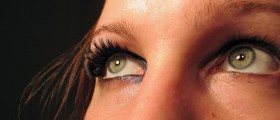
Nystagmus is a medical term for involuntary movement of the eye. Some people are born with nystagmus (congenital nystagmus) while others develop the condition during their lives (acquired nystagmus). Acquired nystagmus never occurs spontaneously. It is associated with some underlying conditions and injuries.
Depending on the direction of involuntary eye movements nystagmus can be further classified into horizontal and vertical. Horizontal nystagmus refers to involuntary eye movement from side to side while vertical nystagmus includes eye movement in an up and down fashion.
Finally, the condition may affect one eye only or be bilateral.Why does Nystagmus Develop?
As it has been mentioned congenital nystagmus is present at birth. The reason why this type of nystagmus occurs has not been identified yet. So in the majority of cases congenital nystagmus actually remains idiopathic. It is estimated that congenital nystagmus affect 1 out of every 1000 children. Congenital nystagmus may occur alone or is sometimes associated with other conditions like albinism, aniridia, optic nerve hypoplasia, glaucoma and congenital cataract. Coloboma, retinopathy of prematurity as well as achromatopsia are several more conditions which may occur together with congenital nystagmus.
As far as acquired nystagmus is concerned, it develops after birth and may affect people of all ages. Acquired nystagmus is commonly associated with head injuries, brain tumors and may affect people suffering from a variety of neurological diseases or diseases of the inner ear. Alcohol intoxication as well as intake of certain drugs and medications are two more causes of acquired nystagmus.
Treatment for Nystagmus
It is common for individuals who suffer from nystagmus to additionally develop refractive errors including myopia, hyperopia and astigmatism. All of these refractive errors are easily brought under control with prescribed eyeglasses and contact lenses. Such visual aids, however, will not cure nystagmus and maintain eyeballs in the desirable position.
Some types of nystagmus may be treated surgically. For this purpose, surgeon manipulates with the muscles controlling the eyes. The goal is to achieve a so called null position, the position with certain degree of angle at which the head is kept and movement of the eye is not so intensive. The overall effect is stabilization of the eyeballs which subsequently improves vision.
Experts may also try with certain medications. Still, medicamentous treatment has not been efficient enough for this condition.
Under certain circumstances acquired nystagmus may be eliminated once the underlying cause is properly treated. Congenital nystagmus is, however, incurable.











-In-Infants-And-Older-Children_f_280x120.jpg)
_f_280x120.jpg)




Your thoughts on this
Loading...